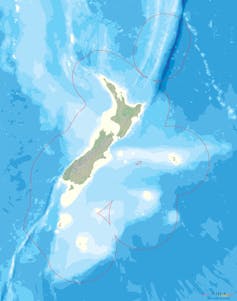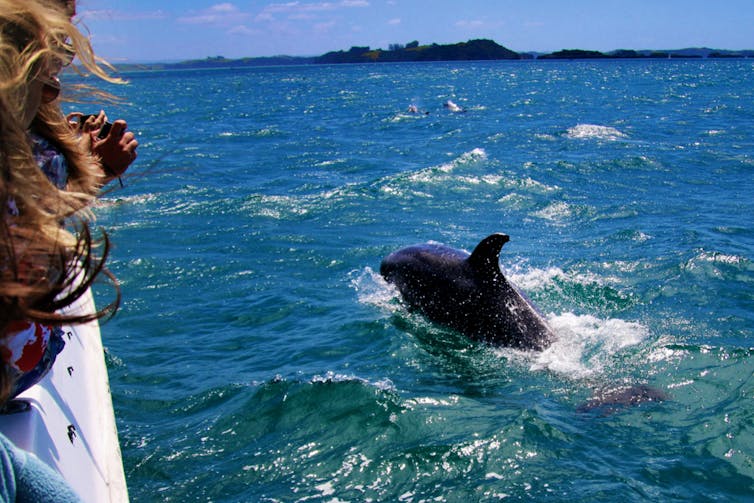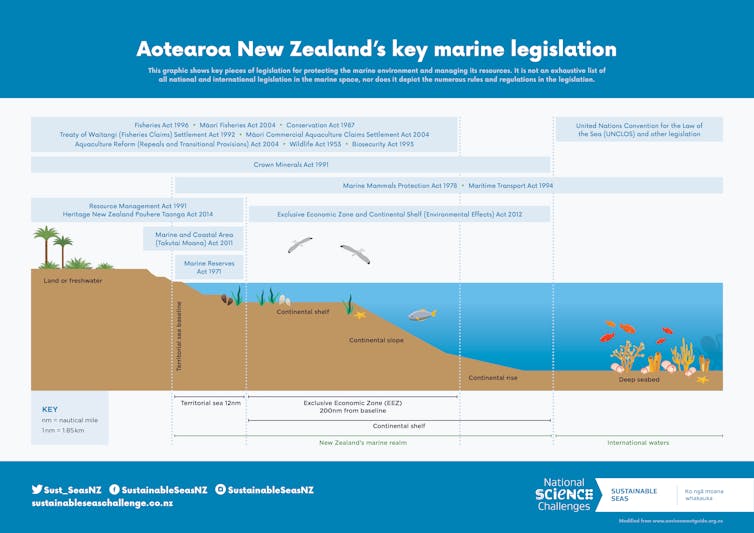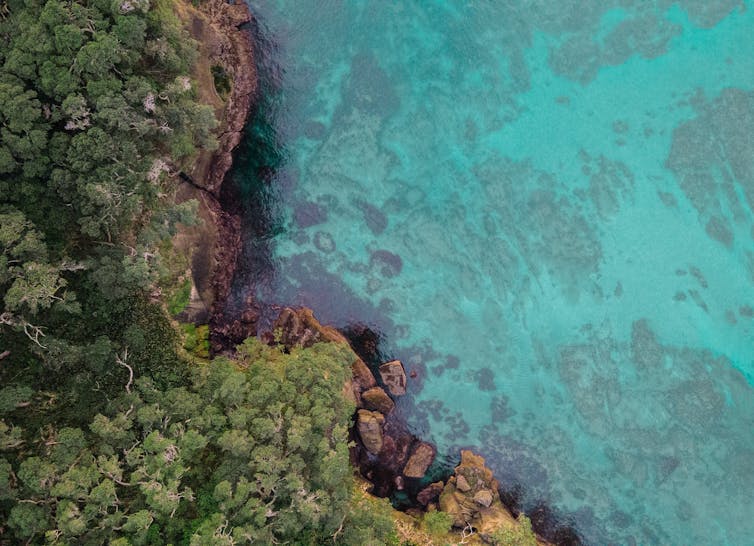By Elizabeth Macpherson & Karen Fisher*
The recent failure of the proposed Kermadec ocean sanctuary is a striking reminder of the need for leadership around New Zealand’s ocean policies.
The “no take” ocean sanctuary was meant to be one of the world’s largest marine protected areas. But last month Te Ohu Kaimoana (which represents Māori fisheries interests) voted against the latest proposal.
Their opposition was on the basis that the government hadn’t consulted iwi, and the proposal would extinguish iwi rights guaranteed in the 1992 Fisheries Deed of Settlement and the Māori Fisheries Act.
Eight years after it was announced, the proposal to create a vast ocean sanctuary around the Kermadec Islands has stalled again. @inkitchnz traces the sanctuary's history and why it's never eventuated. https://t.co/FtETsw3VmH
— The Detail (@TheDetailNZ) June 18, 2023
The government response was an admission that our marine policy is not working as it should, and that we need new marine protection tools consistent with te ao Māori and Te Tiriti o Waitangi.
Our new research suggests a different approach to how New Zealand manages competing uses of the marine environment.
It highlights opportunities to align marine policy and its implementation more closely by considering the ocean as an ecosystem with which people have reciprocal relationships.
New Zealand’s vast ocean territory

Aotearoa is surrounded by a sea territory 15 times the size of its landmass. This extends from the shorelines of the main islands to the Kermadecs (Rangitāhua) in the northwest, the Chathams (Rēkohu) in the east and the subantarctic Campbell Island in the south Pacific ocean.
Two in three New Zealanders live within 5km of the shore and many use the ocean and coasts for recreational and cultural activities. The blue economy provides significant income to New Zealand, including through commercial fisheries, offshore minerals, ports and marinas, maritime transport and coastal tourism.
The Hauraki Gulf alone was recently valued as a NZ$100 billion natural capital asset.

Marine and coastal ecosystems are threatened by climate change, as oceans are acidifying, sea levels rising and sea-surface temperatures increasing. But they are also our best line of defence in buffering extreme events, filtering land runoff and storing “blue carbon”.
Māori have cared for their seascapes for generations and have a complex set of reciprocal marine relationships, including protected fishing rights and interests.
But our marine environment is under immense strain. Recent reports highlight a significant decline in marine ecological health, with flow-on impacts for communities.
The range of complex relationships New Zealanders have with the ocean can be difficult to reconcile, especially against an historical context of repeated Crown failures to respect and uphold the rangatiratanga held by iwi and hapū over oceans and fisheries.
An ecosystem approach to marine policy
New Zealand’s marine policies are currently dispersed across multiple pieces of legislation and regulatory institutions. They may be working towards different, and sometimes competing, objectives and at various time and geographical scales.

Research conducted within the Sustainable Seas national science challenge looks at ecosystem-based management. This involves managing the marine environment in a way that reconciles competing values without degrading the ocean ecosystem. It also recognises that humans are part of the ecosystem.
A more holistic and relational ecosystem-based approach to managing human activities in the ocean would acknowledge the inter-dependencies between living and non-living marine ecosystem components, including people.
It would move away from siloed or single-sector approaches to instead managing relationships and the cumulative impacts of multiple activities in a way that is flexible and adapts to climate change.
Fundamental principles driving oceans policy
Our research found we already have legal and policy “hooks” (or promising reform initiatives underway) that can support ecosystem-based management across the four key marine policy areas of fisheries, conservation, coastal planning and Māori rights and interests. But these are not always well integrated or aligned.
For example, regional councils are responsible for the coastal marine area under the Resource Management Act (which is currently under reform), but the Ministry of Primary Industries is responsible for the regulation and allocation of fishing rights under the Fisheries Act.
Oceans protection is largely the responsibility of the Department of Conservation, while Māori rights and interests are held by iwi and hapū, subject to a wide range of legal regimes and regulation. Each of these policy areas operates on different time and geographic scales and is working towards (sometimes vastly) different policy objectives, with varying budgets and resources.
To overcome this, our research confirmed we need to agree on fundamental marine principles to “anchor” ecosystem-based management and ensure our policy objectives are complementary and consistent with Te Tiriti o Waitangi. We also need to resource this transition – which requires whole-of-government leadership and coordination.

A ministry for the ocean
The current government created a new ministerial portfolio of oceans and fisheries. This doesn’t go far enough.
Marine policy is still spread across multiple laws and institutions working for different purposes. Recent environmental reforms have focused on land-based issues of resource management, conservation and climate adaptation, taking a sector-by-sector approach and overlooking the interconnected threats facing our ocean.
Many have argued we need an oceans agency to support cross-sectoral collaboration and hold the government to account for implementing the rule of law.
We go further and argue Aotearoa needs a ministry for the ocean to match the ministerial portfolio, reflecting the complexity of marine management and departing from the terrestrial bias of our existing laws and institutions. A dedicated ministry could ensure oversight, coordination and alignment of marine policy.
Designing policy and creating institutional arrangements to support ecosystem-based management at central government level is only the beginning. This must also be the catalyst to drive, resource and enable connectivity in governance and management across all levels, to every bay and estuary.
It’s clear the journey for the Kermadec sanctuary is far from over. Te Ohu Kaimoana have proposed an iwi-led Indigenous approach to environmental management – or, as they put it, a relationship with people and nature together, not separated.
It will be interesting to see how this process evolves and whether it might lead to new marine protection tools that reflect our relationships with the ocean for generations to come.
We would like to acknowledge the contribution by Eric Jorgensen, a co-leader of the Sustainable Seas project.![]()
*Elizabeth Macpherson, Associate Professor of Law, University of Canterbury and Karen Fisher, Associate Professor in Human Geography, University of Auckland. This article is republished from The Conversation under a Creative Commons license. Read the original article.
11 Comments
I could not agree more with this article. We need more marine reserves and more restrictions on inshore commercial fishing. Sick to death of seeing trawler lights creeping in at night in the Gulf, pr1cks.
And hence why NZ is not a small country landmass we are 73rd out of 204 countries in the world Canturbury region is the size of the Netherlands which has 17 million plus illegals yet is the second largest agricultural product exporter on dollar value after the US. We are not like say the UK with France and a 12 mile channel or Canada and the US with a solid border. As pointed out out or sea is a vital and strategic earner of income so when someone usually a politician says NZ is small no we are a small population. That sea border still needs to be protected from illegal fishing etc from foreign countries. But can we with our great airforce that seems to breakdown more than fly no disrespect to the men/ women air personnel. But successive govts starting from Aunty Helen have depleted and or butched that critical defense force. And as the world gets smaller you will see more and more ghost ships coming here for that food
Very sound recommendations - with such a huge EEZ resource, I can only assume the reason various governments have chosen not to manage it properly is because there is a huge and influential lobby that wants to continue to exploit it in many ways which are unlawful overseas (e.g. bottom trawling on known, identified seamounts).
Our children will not thank us for this 'blind eye' - fish will be a new gold going forward. 100 years from now (likely sooner) a healthy, well policed/patrolled ecosystem in our EEZ will become as valuable as rare earth mineral deposits on land.
Our oceans are our future.
Under UNCLOS, countries (NZ is a signatory) are required to calculate the maximum sustainable fisheries take from their EEZ and then harvest it. If they do not use their full quota they are obliged to share the balance with a country that does not have its own ocean EEZ. This has the perverse outcome that the more a country knows about its fish stocks, the more fish they are likely to be obliged to take.
So yes, ensuring other nations don't poach our fish stocks will be critical. But it doesn't mean there will be an abundance of fish either - we have to take the sustainable level of fish.
How does that reconcile with marine sanctuaries? Are calculated fish stocks in marine sanctuaries deducted from the calculated maximum sustainable fishery for the country? Either way, on the face of it, this feels like the downstream effect of having marine sanctuaries can in some small way benefit countries that do not have their own ocean EEZ. And a 'penalty' against countries who enact them vs those who don't have any marine sanctuaries.
Not sure about that. Call me a cynic, but I'd expect the fish saved in the sanctuary would still count towards the quota - maritime conventions are usually less than perfect as they are watered down to ensure more countries buy into them.
For interest:
In 2015, MFE consulted on a new MPA Act, proposing four different types of marine protected areas, just as we have different types of parks and reserves for different purposes on land. The legislative change initiative was dropped by the LAB/NZF government.
Marine reserves would be the same as under the current Marine Reserves Act 1971, being strictly protected with the purpose of conserving biodiversity in its natural state.
Species-specific sanctuaries would be similar to marine mammal sanctuaries but would also be available to other marine life like albatross or great white sharks, with rules focused on the specific protection needs of that species.
Seabed reserves would protect areas of the sea floor and would include prohibitions on seabed mining, bottom trawl fishing and dredging.
Recreational fishing parks would recognise that there are areas where the recreational fishing experience could be improved by providing a preference for non- commercial fishing for some species.
Great Article. Outside of our own waters, I do believe we need a whole of South Pacific approach. We have recently sailed from Tahiti and are currently in tonga, we ran across 3 massive, mostly around the Northern Cooks, Chinese trawler fleets in that 1500 mile stretch. Chinese "investment" is everywhere in Tonga and the Cooks. It's a big hook that will be reeled in eventually.
Were the trawlers outside the 200nm limit? The high seas are open for rape and pillage.
I assume sections 74-75 of the Marine and Coastal Area (Takutai Moana) Act 2011 would apply. Meaning the Minister of Conservation or Director General would need to decide on whether to proceed with the Kermadec Ocean Sanctuary. It's clear from that legislation that the interests of customary marine title groups must be given strong consideration...but so also must the marine protection imperatives be weighed strongly. It's represented as being something like Te Ohu Kaimoana having the power of veto, but that doesn't seem to be the case?
The range of complex relationships New Zealanders have with the ocean can be difficult to reconcile, especially against an historical context of repeated Crown failures to respect and uphold the rangatiratanga held by iwi and hapū over oceans and fisheries....
Really most of the tribes lease out their giving Quotes to the foreign Russian/Korean Fishing trawlers that run indo crewed slave ships ... the tribes originally lobby the Quote for their people to go fishing but when non wanted to do the work ..straight to the slave ships that rape our waters .. thanks tribes,,,,
We welcome your comments below. If you are not already registered, please register to comment.
Remember we welcome robust, respectful and insightful debate. We don't welcome abusive or defamatory comments and will de-register those repeatedly making such comments. Our current comment policy is here.